The weather has an undeniable influence on our lives, impacting everything from our mood to our daily activities. This influence becomes even more pronounced when your job requires vast amounts of time outdoors, rain or shine. For outdoor workers in sectors like construction, agriculture, event planning, and more, appropriate weather-resistant gear isn't just a luxury, it's a necessity. But how do you find the right gear to brave the elements and keep you comfortable throughout your workday? This comprehensive guide aims to shed light on this very subject, offering expert insights on understanding waterproof ratings, considering durability and waterproof technology, and choosing comfortable and practical materials. So, let's dive in and explore how to outfit yourself with the best weather-resistant gear tailored for your outdoor job requirements.
Understanding Waterproof Ratings
In the world of outdoor gear, it's hard to deny the significance of waterproof ratings. They're paramount to keep you dry during your outdoor adventures, be it a trekking expedition amidst torrential rains or labor-intensive construction work under sullen, cloudy skies. This article aims to enlighten you on how to decipher these ubiquitous but little-understood numerals found on gear descriptions, helping you find the best fit for your outdoor needs.
The Importance of Waterproof Ratings
Waterproof ratings determine the resistance of your gear to water, measured in millimeters (mm). They essentially dictate how much rain your apparel can withstand before water seeps into your layer, thereby keeping you dry. Imagine caught in a downpour wearing your supposedly 'rainproof' jacket, only to find it soaked in no time. That's precisely what happens when you overlook waterproof ratings. For those engaging in outdoor work in damp, rainy climates, understanding these numbers is crucial. In line with this, our best rain gear for outdoor caters well to varying needs.
Appropriate Ratings for Different Weather Conditions
Let's delve into which ratings are apt for different weather conditions.
- Basic Outdoor Work: For typical everyday jobs under the sky, a waterproof rating of at least 5,000mm suffices. This level of resistance can withstand light to moderate rain.
- Wet and Cold Environments: Planning for winter adventures? A rating between 10,000mm to 20,000mm is advisable. This range ensures that you stay dry even amidst steady rain or snow.
- Severe Weather Conditions: For relentless, heavy rain, you'll need something more robust. Gear reaching up to 30,000mm is designed specifically for these extreme conditions, providing superior protection.
Remember, the higher the waterproof rating, the better the gear performs under heavy precipitation. Yet, it's vital to balance it with breathability because staying dry inside out is the key.
Waterproof ratings are not a gimmick but a guard against the downpours. They aid in making an intelligent purchase that ensures you step out in the rain with confidence, ready for the tasks ahead. Understanding these ratings is your first stride toward a drip-less outdoor experience. So next time you're about to add that eye-catchy gear to your cart, don't forget to check its waterproof ratings!
Considering Durability and Waterproof Technology
In the realm of outdoor gear, durability and waterproof technology play pivotal roles in keeping us comfortable and dry. But, what exactly should we be considering when we're looking for these features in our gear? With everything from unexpected hairline cracks to the importance of strict quality assurance, this section sheds light on the often underestimated but critically significant facets of these factors.
Impact of Hairline Cracks on Effectiveness
Perhaps surprisingly, even the smallest hairline cracks in weather-resistant gear can significantly diminish its effectiveness. In essence, these tiny imperfections can morph into gateways, allowing water or dampness to infiltrate your gear. Once inside, it not only dampens the gear but can also compromise your comfort and, potentially, your health. Seemingly inconspicuous details such as these can make a drastic difference in the overall performance of your gear, hence it’s crucial to ensure their absence when you pick out your Invest in Durable Rain Gear.
Need for Quality Assurance
This brings us to another key aspect - the need for uncompromising quality assurance. Durability and waterproof technology aren't features that can be assessed by the naked eye, nor can they be gauged in a brief trial. Trusted manufacturers invest considerable time and resources in rigorous quality testing to ensure their products stand up to challenging conditions and deliver on their promises. Therefore, investing in quality gear from reputable brands is not just a luxury, but a necessity for your outdoor ventures.
After all, the purpose of weather-resistant gear, be it for your next hiking expedition or to simply tackle the city rain, is to safeguard your comfort and ensure seamless experiences. In this regard, understanding the impact of minor flaws and recognizing the value of quality assurance are essential tools in making informed purchases. The keyword here isn't merely 'just waterproof', it's 'quality waterproof', a distinction that can transform your experience from just ordinary to extraordinary.
Choosing Comfortable and Practical Materials
Choosing clothing that provides both comfort and functionality can be a daunting task, particularly when preparing for unpredictable weather conditions. However, by selecting suitable materials and planning in layers, you're more likely to stay dry and comfortable while engaging in all of your outdoor activities.
Use of Waterproof-Breathable Fabrics
Imagine yourself wearing a jacket that not only shields you from the pouring rain but also lets your body breathe. Sounds impossible? Through advances in fabric technology, it's an achievable reality. Waterproof-breathable materials like Gore-Tex Paclite have been designed precisely with this purpose. Able to ward off rain and wind, while simultaneously allowing for the evaporation of sweat, these materials are remarkably effective. This high-tech combination elicits a level of comfort and practicality necessary for outdoor enthusiasts.
Efficient Clothing Layering
Just as crucial as the material of your gear, is the strategy on how to wear it effectively. Layering your clothing can be the key to managing comfort by regulating temperature and moisture levels. From base to surface, each layer serves a unique purpose:
- Moisture-wicking base layer: Transfers sweat away from your skin, keeping it dry and preventing chilling.
- Insulating mid-layer: Traps the heat your body produces to keep you warm, even when resting.
- Waterproof outer layer: A final barrier to the elements, protecting you from wind, rain, and snow.
Effective clothing layering is a tried and tested strategy to keep comfortable, no matter the weather.
Insulation Considerations for Colder Weather
However, when the temperature takes a nosedive, additional precautions should be taken. Opting for gear that combines waterproofing with insulation is a smart move in colder climates. The insulation rating, often defined in millimeters, provides a guide to the material's ability to resist water penetration. Outfits designed for ski and snowboarding, for instance, should ideally have a minimum insulation rating of 5,000mm for optimal performance and comfort in harsh conditions.
Choosing the right materials for comfort and practicality pool from multiple factors including weather conditions, planned activities, and personal comfort. By incorporating weatherproof and breathable fabrics, smart layering, and mindful insulation choices, you'll be better equipped to stay comfortable and dry in the toughest outdoor conditions. For more guidance on enhancing comfort in challenging environments, refer to our guide on Elevating Comfort in Tough Conditions.
Conclusion
Equipping yourself with the right weather-resistant gear makes all the difference when it comes to outdoor work. From understanding waterproof ratings to choosing practical materials, your decision should consider multiple factors, including durability and comfort. Products like the chainsaw safety pants from Rain Gear Pro, illustrate the perfect balance of these aspects. Besides, they are crafted with utmost consideration for durability, comfort, and practicality, making your work in challenging weather conditions more manageable. Remember, the right gear isn't just about surviving the elements but thriving amidst them. Make every weather your weather!
Frequently Asked Questions
-
What are the key features to look for in weather-resistant gear for outdoor jobs?
Key features to look for in weather-resistant gear for outdoor jobs include waterproof or water-resistant materials, windproof construction, adjustable hoods and cuffs, ventilation options, durable fabrics, and proper insulation for cold weather.
-
What materials are commonly used in weather-resistant gear?
Common materials used in weather-resistant gear include Gore-Tex, nylon, polyester, and eVent. These materials are known for their waterproof or water-resistant properties and ability to withstand harsh weather conditions.
-
How important is breathability in weather-resistant gear?
Breathability is crucial in weather-resistant gear as it allows sweat and moisture to escape, preventing the wearer from becoming overheated and uncomfortable. Look for gear with breathable membranes or mesh panels for optimal comfort.
-
Should I prioritize lightweight or heavy-duty weather-resistant gear?
The answer depends on the nature of your outdoor job. If mobility and flexibility are essential, lightweight gear may be the better choice. However, for jobs that involve extreme conditions or heavy wear, opting for heavy-duty gear is recommended for maximum durability and protection.
-
How do I ensure the right fit when choosing weather-resistant gear?
To ensure the right fit, carefully check the sizing charts provided by the manufacturer. Additionally, consider trying on the gear or reading customer reviews to understand how it fits. It's important to have a snug fit without restricting movement.



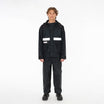



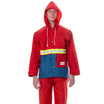


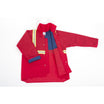

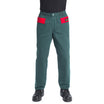



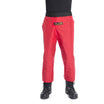






Leave a comment
This site is protected by hCaptcha and the hCaptcha Privacy Policy and Terms of Service apply.